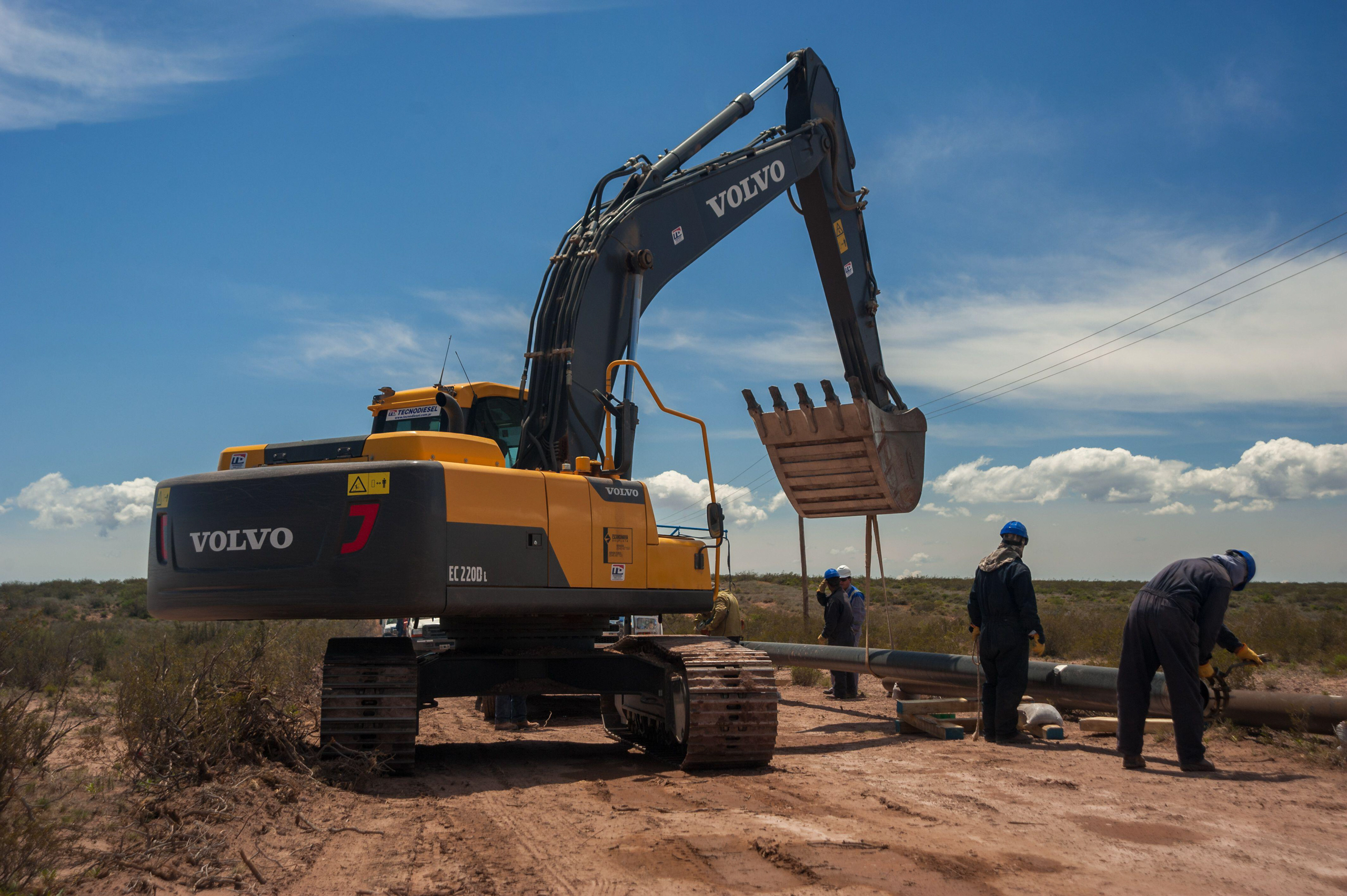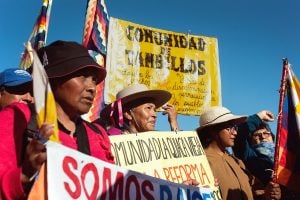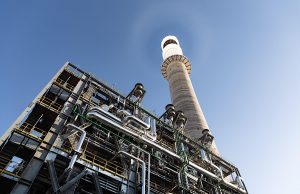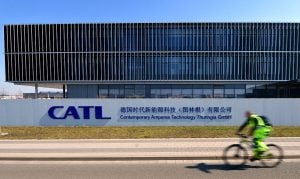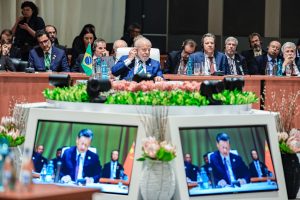Shortly after taking office in 2023, the president of Argentina Javier Milei announced an initiative to attract large investments into Argentina.
Targeted at domestic or foreign companies willing to invest more than USD 200 million in the country, the boons offered by the Large Investment Incentive Regime (Rigi) include tax exemptions and foreign exchange and customs advantages.
The Rigi has so far attracted 11 proposals since being approved by congress in July 2024 and entering into force in October. These projects represent a combined total of USD 15.5 billion in investment pledges, according to economy ministry sources. Four have been approved by the government and the others are awaiting confirmation. Most focus on energy and mining.
The government expects the Rigi’s incentives to lead to a boom in energy and mining exports, expanding the economy. But experts consulted by Dialogue Earth point out that the Rigi has not attracted as many brand-new investment proposals as it may seem, and that it could risk domestic deindustrialisation by encouraging the import of equipment required for these projects. Moreover, they are concerned about the Rigi’s lack of consideration for environmental protections, and its prioritisation of corporate access to strategic resources, including water.
In its analysis of the Rigi, Argentine NGO the Environment and Natural Resources Foundation (Farn), quotes the environmental law essayist Martine Rémond-Gouilloud: “It seems that, underpinning economic incentives is the enshrined right to destroy natural resources in a discretionary and anarchic manner when, in truth, we have an imperative need to preserve them.”
Rigi advantages
The Rigi aims to attract investments in forestry, tourism, infrastructure, mining, technology, steel, energy, oil and gas.
Associated projects will benefit from 30 years of regulatory stability in tax, customs, exchange and regulatory matters. In the event of any dispute with the state, companies will be able to resort to international tribunals, such as the International Centre for Settlement of Disputes. Argentina’s provincial and municipal authorities can also join the Rigi and offer their own benefits to potential investors, on top of those guaranteed by the state.
Leading figures from sectors the Rigi will benefit have expressed strong support. For example, Alejandro Bulgheroni, president of Pan American Energy Group and the third-richest person in Argentina, recently said Milei “is working hard to generate the necessary investments for the development of our energy resources, as well as related infrastructure works”.
Meanwhile, representatives of the manufacturing industry have warned of the Rigi’s negative impacts. For example, the Rigi permits companies to import capital goods and inputs without tariffs. In early May, the Association of Metallurgical Industrialists of the Argentine Republic (Adimra) issued a statement arguing that this “directly undermines domestic production of goods destined for these projects, by granting preferential treatment to imported goods”.
Energy infrastructure
Four of the 11 proposals so far submitted to the Rigi have been approved.
The first is the El Quemado solar park in Mendoza, west-central Argentina. This 305-megawatt project will be led by the state oil company, YPF, in collaboration with Mendoza Energy Company (Emesa). According to government sources, the investment is worth USD 211 million.
The second is the USD 2.5 billion Vaca Muerta Oil Sur pipeline construction project, which will transport oil extracted from the Vaca Muerta unconventional oilfield in Neuquén province, west Argentina. The pipeline will lead 470 kilometres south-east of Vaca Muerta to the coastal municipality of Punta Colorada, Río Negro province, for export. The project, which could be operational by the fourth quarter of 2026, is being carried out by YPF along with six other oil companies. YPF’s CEO, Horacio Marín, has described Vaca Muerta Oil Sur as “a before-and-after for the industry”.
“The hydrocarbon sector is experiencing a strength that differentiates it from the rest of the economy, based on the promotion of exports by both the government and YPF,” explains Juan José Carbajales, who directs the energy, law and public policy consultancy firm, Paspartú.
Another approved fossil-fuel expansion project is YPF’s Argentina LNG (liquefied natural gas) venture, also off Río Negro’s coast in Punta Colorada. This will establish infrastructure to moor two gas liquefaction ships, enabling Vaca Muerta-sourced LNG exports.
Mining investments
Another focus of these investments is mining, which accounts for six of the 11 Rigi proposals. So far, the largest investment has been approved: Rio Tinto’s USD 2.7 billion project to expand its Rincón Lithium project in Salta province, northern Argentina.
Also in Salta, the South Korean mining company Posco has proposed a USD 633 million investment to expand its Sal de Oro lithium project. The third in this province is a USD 273 million proposal by China’s Ganfeng Lithium to build the Pozuelos-Pastos Grandes lithium plant, which is currently in the engineering stage.
Another lithium proposition comes from the Australian company Galan Lithium. It would expand the Hombre Muerto West lithium mine in Catamarca, just south of Salta, and is worth USD 217 million.
Minas Argentinas, which owns the Gualcamayo gold mine in the west-central province of San Juan, has proposed an expansion project worth USD 1 billion. It would include another gold mine, new industrial lime production and a solar park. Also in San Juan, the USD 227 million Los Azules copper mine proposal is a collaboration between Canada’s McEwen Copper, the Stellantis automobile conglomerate, and Rio Tinto.
The Rigi’s benefits for mining ventures are complemented by an investment regime passed into Argentine law in the early 1990s. This legislation provides similar facilities to those now being extended by the Rigi to other sectors of the economy.
When asked about the need for this perceived double boost for Argentina’s mining sector, Salta’s production and sustainable development minster, Martín de los Ríos, said he considers the Rigi to represent “overinsurance” for companies – the more the government can do to persuade international investors to pick Argentina for their projects, the better.
Guido Bambini, a researcher at the Centre for the Political Economy of Argentina (CEPA), argues that many of these proposals were already in the pipeline; when the possibility of the Rigi emerged, he claims registrations were paused until these new benefits came into effect. “It has not brought about new projects,” Bambini claims.
No environmental protections
In the legislation supporting the Rigi, there is no mention of environmental protection. Nor is it mentioned in the regime’s regulations. Environmental variables are therefore not considered as the benefits of these projects are weighed, nor will environmental violations be considered when defining the cessation of Rigi privileges.
Environmental liabilities – a major risk of large extractive projects like mining – are also not mentioned. “The Mining Code of the 1990s established an environmental chapter. In the Rigi, there is no mention of the issue,” confirms Andrés Nápoli, Farn’s executive director.
If water is scarce in that territory [near mega-mining projects], as is often the case, the local population’s water supply would be relegatedAndrés Nápoli, Farn’s executive director
One of Farn’s criticisms concerns article 193 of the Rigi: projects adhering to the regime “may not be affected by regulatory restrictions on the supply, transport and processing of inputs destined for such exports […] based on domestic supply priorities or other regulatory priorities or rights in favour of other sectors of demand”.
Nápoli explains: “In mega-mining projects, water could be considered an ‘input’ by investors. If water is scarce in that territory, as is often the case, the local population’s water supply would be relegated.”
Chinese interest
As Argentina’s second-largest trading partner, China is a key target for the Rigi. In November, the economy ministry’s secretary of production coordination, Juan Pazo, led a visit to China, to advance Rigi investment agreements with Chinese companies.
However, according to the director of the Argentine-Chinese Council (CAC), Ernesto Fernández Taboada, “so far there has not been much movement on the part of Chinese companies with respect to the Rigi”. China has been increasing its global development investments via the state’s Belt and Road Initiative, which Argentina is a member of, but the portion of this funding going to Latin America has been falling.
Dialogue Earth consulted Norma Ramiro, director of the Argentine Chamber of Commerce Asia’s (Cámara del Asia) mining and energy commission. She insists the Rigi attracts a lot of attention from foreign investors, because of the legal certainty it provides: “Companies from China, but also from Korea, Japan, India and Canada are favourable to submit projects.”
The Rigi will remain open for new investment proposals until August 2026. In the coming months, the government is expected to make further approvals of submitted projects.

